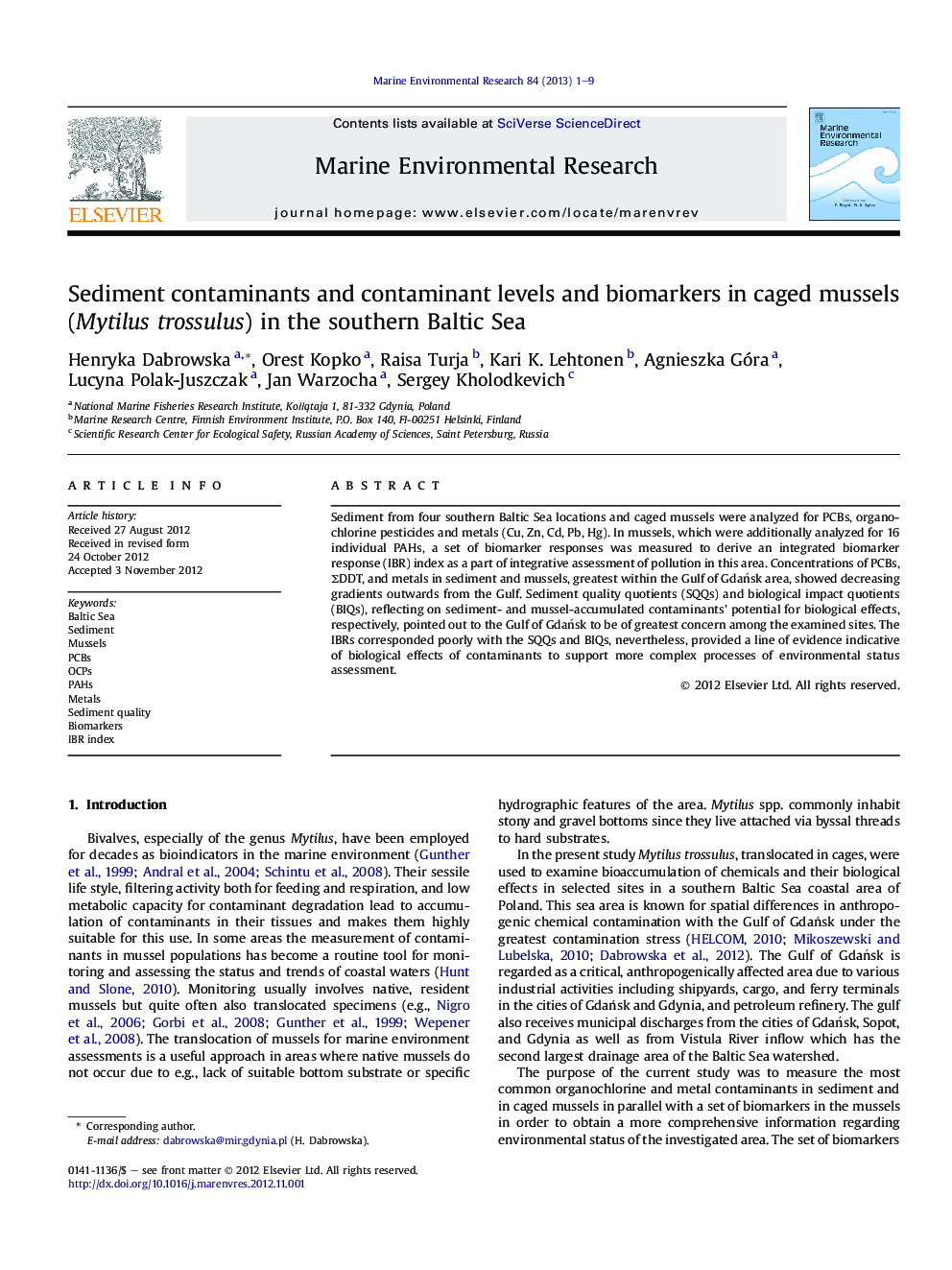| Article ID | Journal | Published Year | Pages | File Type |
|---|---|---|---|---|
| 4550857 | Marine Environmental Research | 2013 | 9 Pages |
Sediment from four southern Baltic Sea locations and caged mussels were analyzed for PCBs, organochlorine pesticides and metals (Cu, Zn, Cd, Pb, Hg). In mussels, which were additionally analyzed for 16 individual PAHs, a set of biomarker responses was measured to derive an integrated biomarker response (IBR) index as a part of integrative assessment of pollution in this area. Concentrations of PCBs, ΣDDT, and metals in sediment and mussels, greatest within the Gulf of Gdańsk area, showed decreasing gradients outwards from the Gulf. Sediment quality quotients (SQQs) and biological impact quotients (BIQs), reflecting on sediment- and mussel-accumulated contaminants' potential for biological effects, respectively, pointed out to the Gulf of Gdańsk to be of greatest concern among the examined sites. The IBRs corresponded poorly with the SQQs and BIQs, nevertheless, provided a line of evidence indicative of biological effects of contaminants to support more complex processes of environmental status assessment.
► Contaminants in sediment were influenced by the distance from the Gulf of Gdańsk. ► Inter-site differences in mussel contaminants generally reflected the trends observed for sediment. ► SQQs and BIQs pointed out to the Gulf of Gdańsk to be of concern for biological impact. ► The IBR index provided a line of evidence indicative of biological effects of contaminants.
